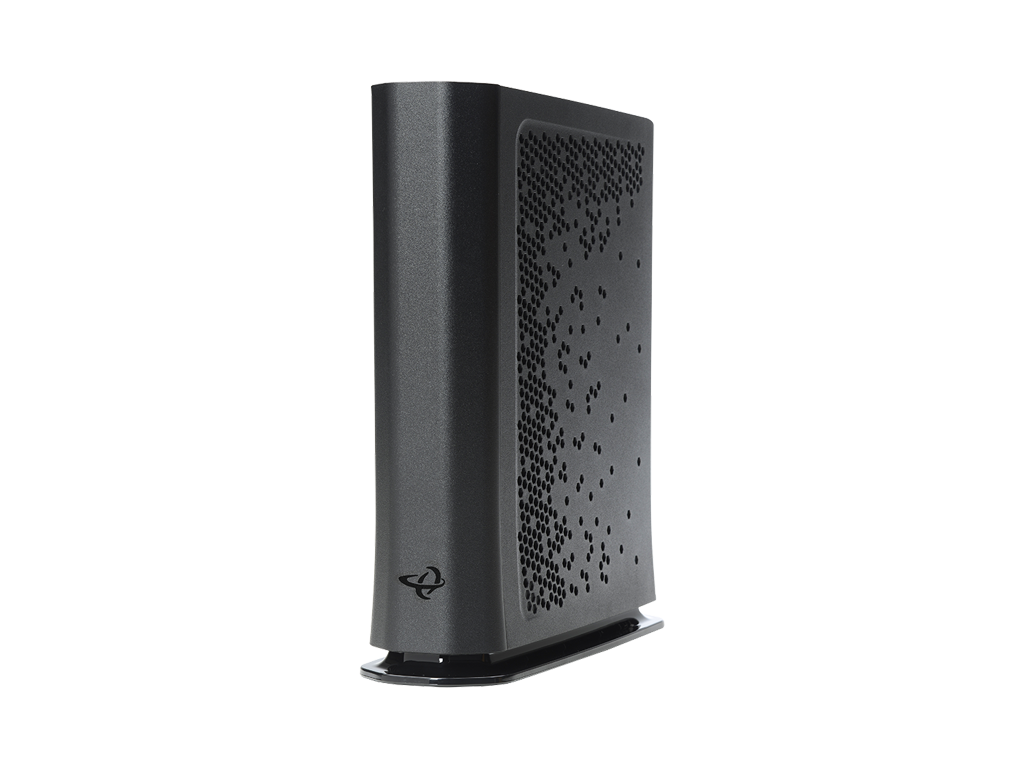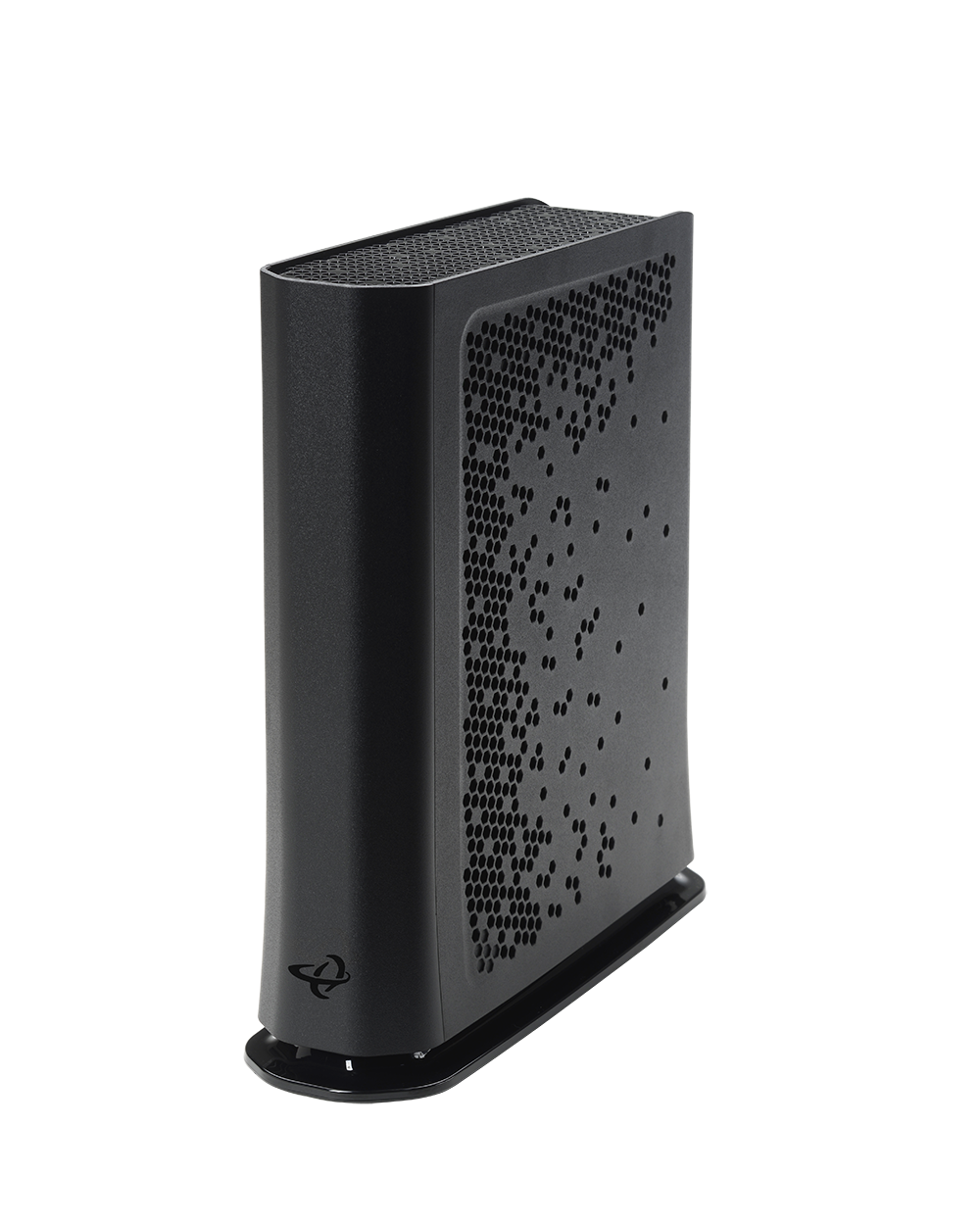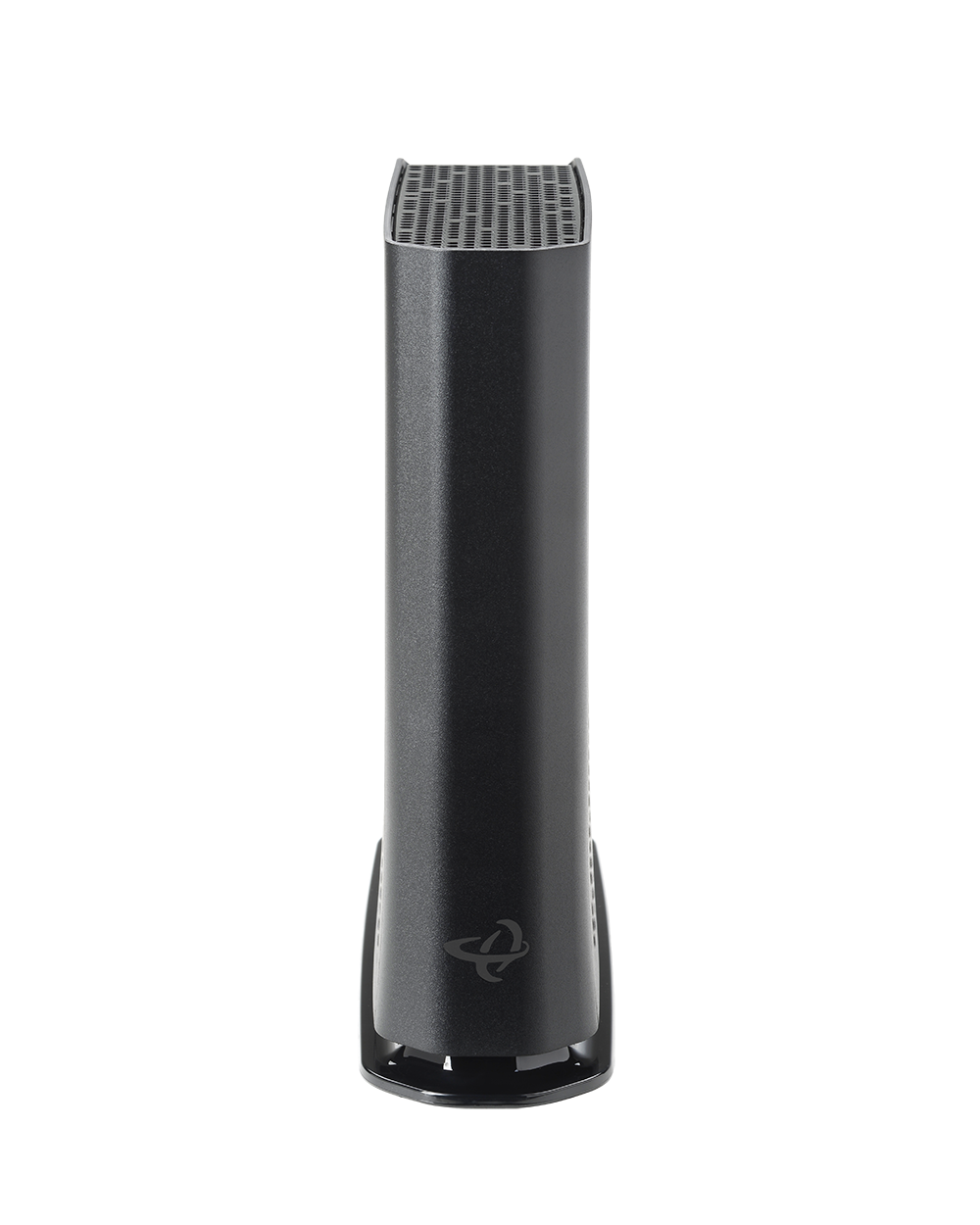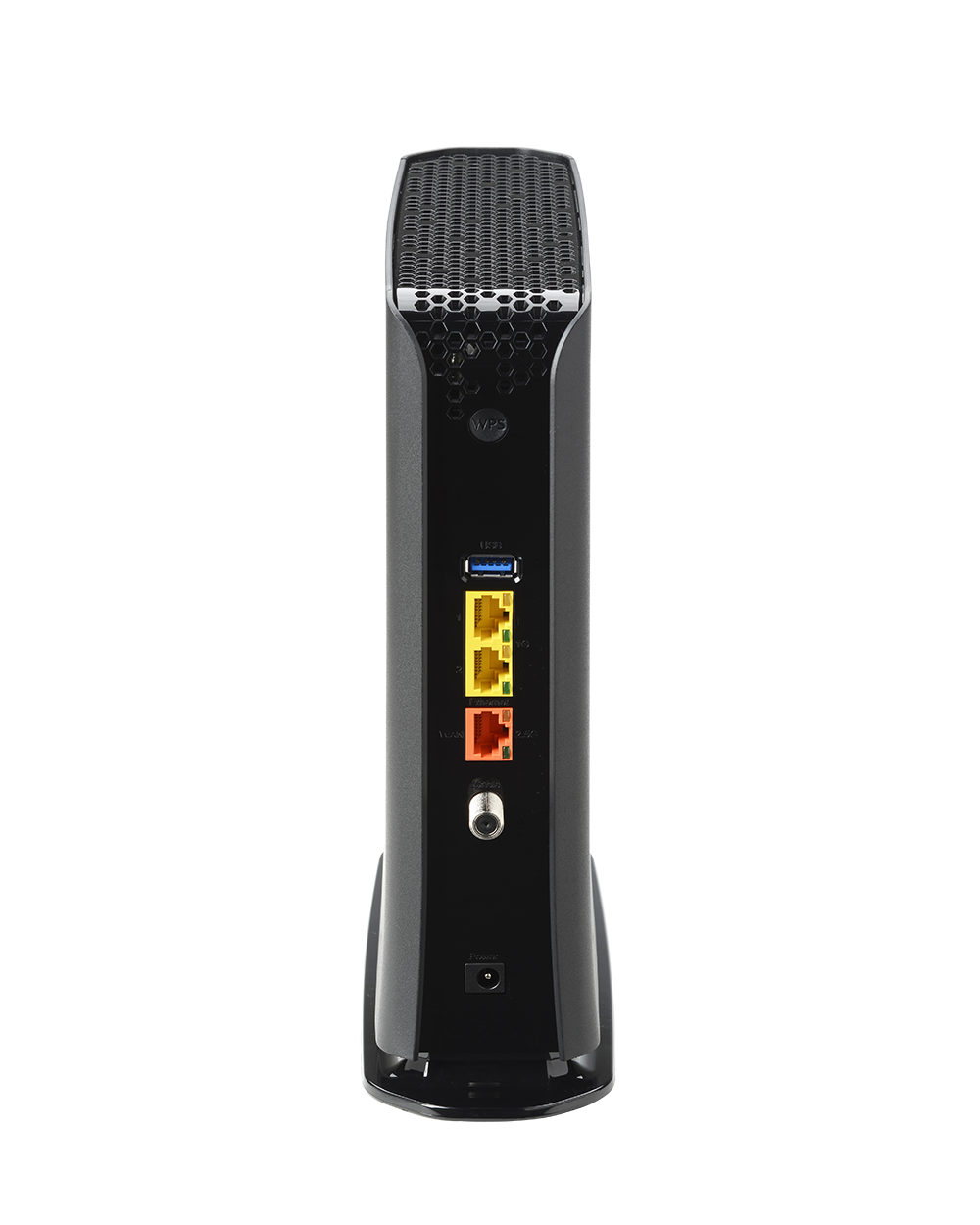DOCSIS 3.1 with Full Backward Compatibility
Supports 2×2 OFDM/OFDMA plus DOCSIS 3.0 32×8 bonding to ensure multi-gig performance today with smooth compatibility for existing DOCSIS 3.0 deployments.
Extended Downstream to 1218 MHz
Provides expanded downstream capacity, enabling more throughput and future-proofing networks for higher-speed broadband plans.
Flexible Upstream Frequency
Switchable upstream modes (5–85 MHz / 5–204 MHz) support mid-split and high-split transitions without hardware replacement.
Wi-Fi 6 Advantage
Dual-band Wi-Fi 6 with 4×4 5 GHz and 4×4 2.4 GHz radios ensures higher speeds, lower latency, and improved efficiency for multiple connected devices.
Multi-Gig Wired Connectivity
Features 1× 2.5 Gbps Ethernet port and 2× 1 Gbps ports for high-speed wired backhaul and device connectivity.
Carrier-Grade Management
Supports TR-069, TR-369, SNMP, and HNAP, and integrates with Hitron’s management ecosystem (MyHitron+, HitronCloud) for simplified provisioning, troubleshooting, and diagnostics.
Benefits for Service Providers
- Future-Proofed with Extended Downstream: Ready for faster broadband services thanks to 1218 MHz downstream support.
- All-in-One Simplicity: Combines DOCSIS 3.1 modem and Wi-Fi 6 router into one device to reduce install complexity and streamline support.
- Flexible Deployment: Backward compatible with DOCSIS 3.0 and adaptable to evolving upstream splits.
- Enhanced Customer Experience: Strong Wi-Fi 6 and multi-gig wired connections support 4K/8K streaming, gaming, smart homes, and more.
Key Specifications
- DOCSIS Support: DOCSIS 3.1 (2×2 OFDM/OFDMA) + DOCSIS 3.0 (32×8)
- Downstream Band: Extended up to 1218 MHz
- Upstream Modes: Switchable 5–85 MHz / 5–204 MHz
- Wi-Fi: Dual-band Wi-Fi 6 (4×4 5 GHz + 4×4 2.4 GHz)
- Ethernet Ports: 1× 2.5 Gbps + 2× 1 Gbps
- Management: TR-069, TR-369, SNMP, HNAP, MyHitron+, HitronCloud
- Other Features: IPv4/IPv6 support, multiple SSIDs, advanced security and firewall features
Documentation
Other Products to Consider
Product
Modem Type
Frequency
WiFi
Wired LAN
Voice
Learn More about Cable Modems & Routers
What’s the Difference Between a Router and Modem?
The difference between a router and modem is simple: A modem connects your home to your Internet Service Provider (ISP) and brings Internet service into your home. A router takes that Internet connection and shares it wirelessly (or wired) with your devices inside the...
How to Reset a Cox Cable Modem
If your Internet isn’t working right now, here’s what you need to know fast:Restarting your Cox modem is a quick power cycle that keeps your settings and often fixes slow or dropped connections. Resetting, on the other hand, erases everything and restores factory...
Spectrum Modems: What You Should Know Before Buying or Upgrading
Not all modems work with Spectrum. To use your own modem, it must be on Spectrum’s approved modem list and support the right DOCSIS standard (usually DOCSIS 3.1). Spectrum offers rental modems, but many customers choose to buy their own to save money and get better...
What’s Required to Be an Approved Xfinity Modem Router?
To use your own modem with Xfinity, it must be approved by Comcast, support DOCSIS 3.1, and match the speed tier of your Internet plan. Approved modems are listed on Xfinity’s website and are tested for performance and reliability. Choosing a compatible modem gives...
What Modems Work with Xfinity? (And How to Choose the Right One)
Yes, you can use your own modem with Xfinity—as long as it’s compatible with their network. To avoid rental fees and get faster speeds, choose a DOCSIS 3.1 cable modem that is certified by Xfinity. Hitron’s CODA and CODA56 modems are reliable, high-performance options...




